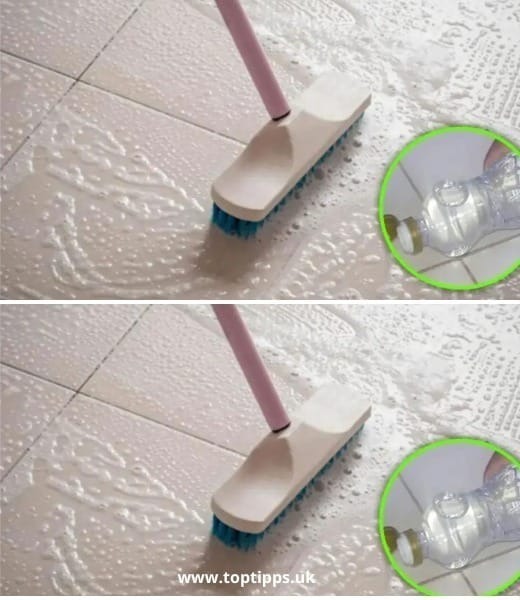The Power of Vinegar in Floor Cleaning
Vinegar, a common pantry item, has been used for generations due to its potent cleaning and disinfecting properties. The acetic acid in vinegar gives it powerful antibacterial and antimicrobial qualities, making it an excellent choice for cleaning floors without harmful chemicals. By blending vinegar with water, you can create an all-natural cleaner that not only kills bacteria but also leaves your floors gleaming and fresh.
Why Vinegar is an Eco-Friendly Choice
Unlike commercial cleaning products that often contain harsh chemicals, vinegar is a non-toxic, eco-friendly solution. It doesn’t release harmful fumes, making it safe for use around pets and children. For families who want to reduce their chemical footprint, vinegar offers a sustainable and affordable alternative. Beyond its cleaning abilities, vinegar is also biodegradable, meaning it has a minimal impact on the environment.
Cutting Through Grime and Sticky Residue
Vinegar’s acidity allows it to break down grime and sticky substances with ease, making it especially useful in high-traffic areas like kitchens and entryways. Its ability to dissolve tough stains and residue left from food spills or tracked-in dirt makes it an invaluable tool for keeping floors spotless. Even on surfaces that accumulate everyday dust and dirt, vinegar can be highly effective, leaving them looking like new.
Vinegar for Various Flooring Types
One of the key benefits of vinegar is its versatility—it can be used on a variety of floor types, including tile, laminate, and vinyl. However, caution should be taken when using vinegar on hardwood floors, as the acidity could potentially damage the wood’s finish. When in doubt, diluting the vinegar further or testing it on a small area first is recommended.
How to Use Vinegar for Cleaning Floors
To clean with vinegar, simply mix one cup of vinegar with a gallon of warm water. For particularly dirty floors, you can increase the concentration slightly, but be cautious not to overuse it, especially on sensitive surfaces. Once the solution is prepared, mop the floors as usual, then let them air dry for a streak-free shine. Adding essential oils like lavender or lemon can enhance the scent if the strong odor of vinegar is undesirable.
Additional Uses for Vinegar in the Home
Beyond floor cleaning, vinegar can be used for a multitude of household tasks. From cleaning windows and countertops to deodorizing fabrics and freshening up drains, vinegar’s versatility makes it a must-have in any home. Its ability to tackle a variety of cleaning challenges, including removing pet odors and sanitizing kitchen surfaces, further solidifies its status as an all-purpose cleaner.
The Science Behind Vinegar’s Effectiveness
The acetic acid in vinegar, which typically makes up 5-8% of its content, is the key to its cleaning prowess. This acid helps break down dirt, grime, and bacteria, making vinegar a powerful and natural cleaner. Recent studies have also shown vinegar’s effectiveness in eliminating certain strains of bacteria and viruses, supporting its use as a disinfectant in a time when natural cleaning alternatives are gaining popularity.
Is Vinegar the Right Choice for You?
If you’re looking for a budget-friendly, natural, and environmentally safe cleaning solution, vinegar is likely the perfect choice. However, always remember to test it on a small section of your floor to avoid potential damage, especially for delicate surfaces like wood. Additionally, its strong smell may not be for everyone, though this can be mitigated with essential oils or by ensuring good ventilation.
Conclusion
Vinegar is a powerhouse when it comes to cleaning floors and various other surfaces around the home. Its combination of affordability, environmental benefits, and effectiveness makes it a go-to for many homeowners. Whether you’re dealing with tough stains or simply looking for a way to sanitize your floors, vinegar offers an easy, chemical-free solution that’s safe for the whole family.
Vinegar might just be the magic ingredient missing from your cleaning routine—so why not give it a try?

